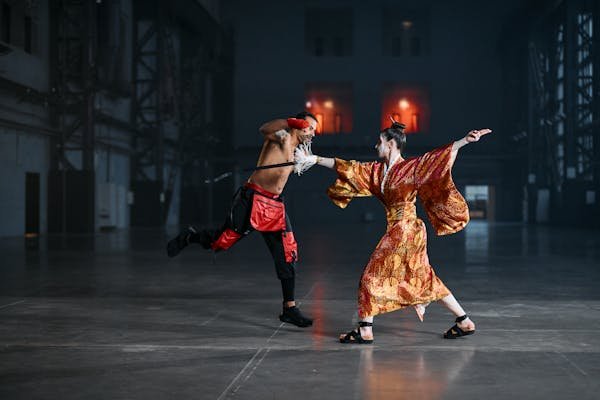Throughout history, the sword has been a symbol of power, honor, and skill. While much attention is given to the blade, the true control of a sword lies in how it is held. The gripped part of a sword, known as the hilt, is where a warrior’s command over the weapon begins. This often-overlooked component determines precision, strength, and endurance in battle.
From ancient warriors to modern martial artists, how they grip their swords shapes combat techniques and determines the outcomes of legendary duels. It explores the deep significance of the sword’s grip, its evolution across cultures, and why mastering it has always been the key to victory.
The Anatomy of a Sword’s Grip
Understanding the Hilt
The hilt is more than just a handle—it is the connection between the warrior and the weapon. A well-crafted hilt ensures balance, control, and protection. The main components include:
- The Pommel – Acts as a counterweight to the blade, improving balance and allowing for quicker movements.
- The Grip – Designed for comfort and firmness, often wrapped in leather or cord to prevent slipping.
- The Guard – Protects the hand from enemy strikes and provides stability during combat.
Materials and Craftsmanship
Different cultures used various materials to enhance the grip. Leather, wood, bone, and even precious metals were shaped to fit the warrior’s hand perfectly. Japanese katanas, for example, featured ray skin and silk wraps for a non-slip hold, while European longswords often had grooved wood or metal grips for better handling in armored combat.
The Role of the Grip in Combat
Control and Precision
A warrior’s life depended on how well they could maneuver their sword. A loose grip meant slower reactions, while a firm hold allowed for swift, decisive strikes. Historical fencing manuals emphasize grip adjustments for different techniques—tight for powerful blows, relaxed for quick slashes.
Endurance in Battle
Long battles tested a warrior’s stamina. A poorly designed grip caused fatigue, blisters, and even loss of the weapon mid-fight. The best swords were those that felt like an extension of the arm, reducing strain and allowing prolonged use.
Psychological Impact
A confident grip instilled fear in opponents. The way a warrior held their sword signaled experience—seasoned fighters had a relaxed yet unshakable hold, while novices often clutched too tightly, revealing their lack of skill.
Historical Evolution of Sword Grips
Ancient and Medieval Swords
- Roman Gladius – Short, one-handed grip for close-quarters combat, allowing rapid stabbing motions.
- Viking Swords – Often had a simple, sturdy grip for brutal slashing attacks.
- Knightly Longswords – Designed for two-handed use, with longer grips to generate immense cutting force.
Eastern Sword Traditions
- Katana (Japan) – The tsuka (handle) was wrapped meticulously for a perfect grip, essential for precise, fluid strikes.
- Jian (China) – Balanced for both cutting and thrusting, with a smooth yet secure hold.
Renaissance and Beyond
As warfare evolved, so did sword designs. Rapiers featured complex hilts with finger rings for better control in duels, while cavalry sabers had curved grips to align with slashing motions from horseback.
Modern Applications of Sword Grips
Martial Arts and Training
Even today, mastering the grip is fundamental in disciplines like:
- Kendo – Emphasizes proper tsuka grip for powerful strikes.
- HEMA (Historical European Martial Arts) – Recreates medieval techniques with authentic grip styles.
- Fencing – Uses specialized pistol grips for quick, precise thrusts.
Sword Collecting and Replicas
Enthusiasts and historians value swords not just for their blades but for their hilts. A well-preserved or accurately replicated grip increases a sword’s authenticity and worth.
Conclusion
The gripped part of a sword is where skill meets steel. It is the foundation of control, the source of power, and often the difference between victory and defeat. From ancient battlefields to modern dojos, how warriors wield their swords showcases their masterful art.
Understanding its importance not only deepens our appreciation for historical weapons but also reminds us that true mastery lies in the details—the way a hand closes around the hilt, ready to shape fate with every swing.
FAQs
What is the gripped part of a sword called?
The gripped part is called the hilt, which includes the handle, guard, and pommel.
Why is the sword’s grip important?
It determines control, precision, and endurance in combat. A weak grip leads to poor strikes and fatigue.
How did warriors improve their sword grip?
They trained with weighted weapons and used wrapped handles for better grip and comfort.
Do modern martial artists focus on sword grips?
Yes. Styles like Kendo, HEMA, and fencing emphasize proper grip techniques for power and accuracy.














